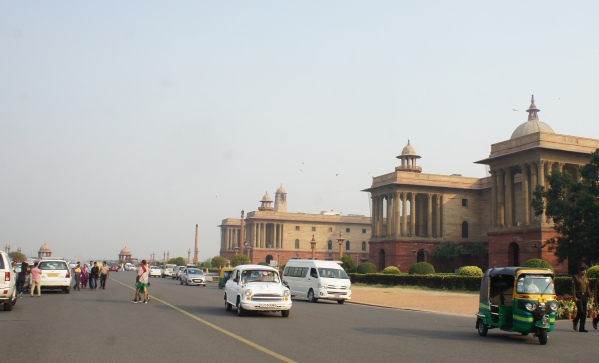December 15, 2025 07:27 pm (IST)

Odd-even formula 2.0 worked but farm fires and forest fires played spoilsport: CSE
New Delhi, May 3 (IBNS): Centre for Science and Environment (CSE) has released its analysis of air quality data during the second phase of odd and even scheme- from April 15 to April 30.
This shows that air pollution took a downward dip during the first 10 days of the scheme but registers a sudden spike from April 22 onwards, a CSE release has said.
Further investigations and analysis of NASA satellite pictures has exposed massive crop fires in Punjab and Haryana that started around April 19 – which could be the reason behind the rise in pollution levels.
The CSE investigation was triggered by the widespread media reportage on the findings of India Spend that PM2.5 had increased by 23 percent and PM10 by 22 percent compared to the previous fortnight. This was also used by the automobile industry in the Supreme Court hearing on April 30, 2016 to claim that this shows that vehicles are insignificant contributors to pollution and therefore do not merit stringent action.
The CSE investigation has exposed how half-baked and irresponsible explanation of the air quality trend has led to misinterpretation of the benefit of the odd-and-even scheme and helped create the industry myth that vehicles are not the problem. India Spend and the industry have failed to catch the reason for the sudden spike in pollution post-April 22. They have missed the massive crop fires that started around April 20 and got intense over time and elevated pollution not only in Delhi, but in other cities of northern India as well.
"What is damaging is that in the absence of clear explanation of the reasons for the pollution spike towards the end of the scheme, this has led to the misleading conclusion that odd-and-even has not made any impact," the release said.
The CSE has found that pollution level declined during the initial phase of odd-and-even for the first nine days: Between April 15 and April 23 PM2.5 levels declined substantially compared to the previous fortnight. The average PM2.5 level during the first nine days was 24 percent lower than the average of the previous fortnight.
PM2.5 and NO2 suddenly spiked post-April 23 and continued till April 30: There is a distinct and sudden spike of pollution after April 23 when PM2.5 increased by as much as 92 per cent and NO2 by 47 per cent. In fact, air quality index reported for the key north Indian cities including Delhi, Faridabad, Agra and Lucknow shows an overall increase in PM2.5 after April 26. Within a day, the AQI worsened by 22 to 20 per cent by April 26. The AQI of Delhi worsened by 16 per cent.
CSE investigated the reason for the sudden pollution spike and found raging crop fires after April 21: This sudden spike in pollution after April 23 had to have a reason -- CSE therefore investigated based on NASA satellite imagery (NASA web fire mapper) and found that before the odd-and-even scheme and during the first few days, there was virtually no crop fire in Punjab and Haryana. But April 21 onwards, there was a sudden spurt in crop fires that became widespread and intense from April 23 onwards. April 26 was particularly bad. During the spike, the pollution levels increased despite the increase in wind speed (see Graph and satellite maps – check the URL given below).
CSE has concluded that odd-and-even is an important temporary emergency measure to help control worsening of pollution. "But this will have to be implemented along with longer term solutions for lasting air quality gains," it said.
Support Our Journalism
We cannot do without you.. your contribution supports unbiased journalism
IBNS is not driven by any ism- not wokeism, not racism, not skewed secularism, not hyper right-wing or left liberal ideals, nor by any hardline religious beliefs or hyper nationalism. We want to serve you good old objective news, as they are. We do not judge or preach. We let people decide for themselves. We only try to present factual and well-sourced news.
Support objective journalism for a small contribution.
Latest Headlines
Delhi chokes as AQI slips to ‘severe’, smog blankets city
Sun, Dec 14 2025
India’s solar explosion: 24.28 GW added this year — Clean energy hits unprecedented 31.25 GW!
Sun, Dec 07 2025
Tamil Nadu and Puducherry reel under Cyclone Ditwah fury! Streets flooded, red alert issued, storm moving closer
Sun, Nov 30 2025
Cyclone Ditwah affects Tamil Nadu: Flights cancelled, schools shut
Sat, Nov 29 2025
Delhi air pollution worsenses, AQI deteriorates to 384; several NCR pockets in 'severe' category
Fri, Nov 28 2025
Delhi orders 50% office attendance as toxic air triggers GRAP-3
Mon, Nov 24 2025
COP30 in Belém delivers huge climate finance push
Sun, Nov 23 2025







